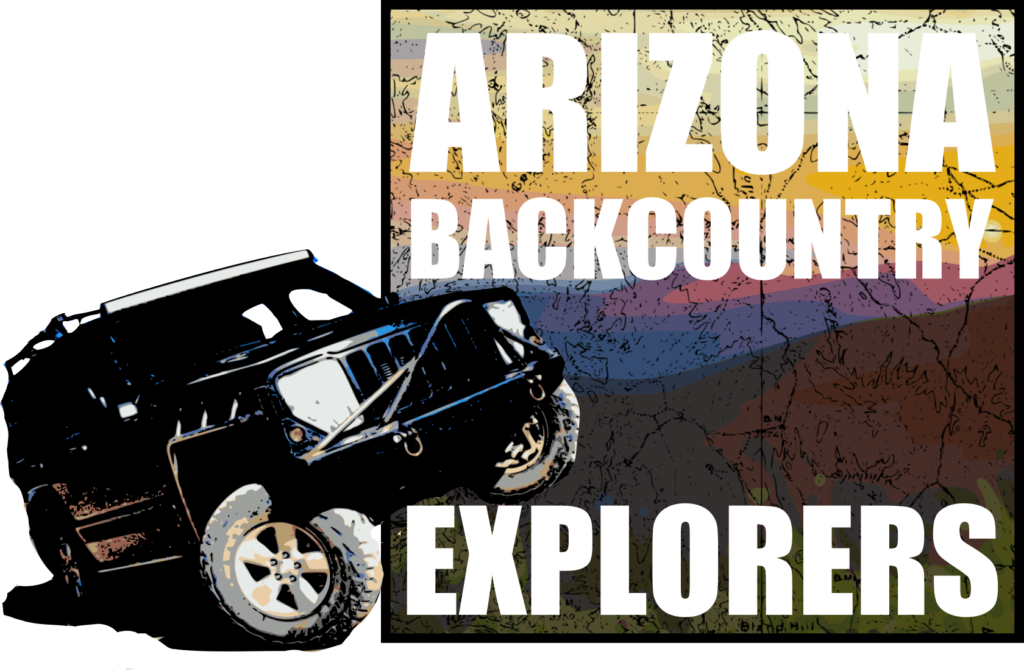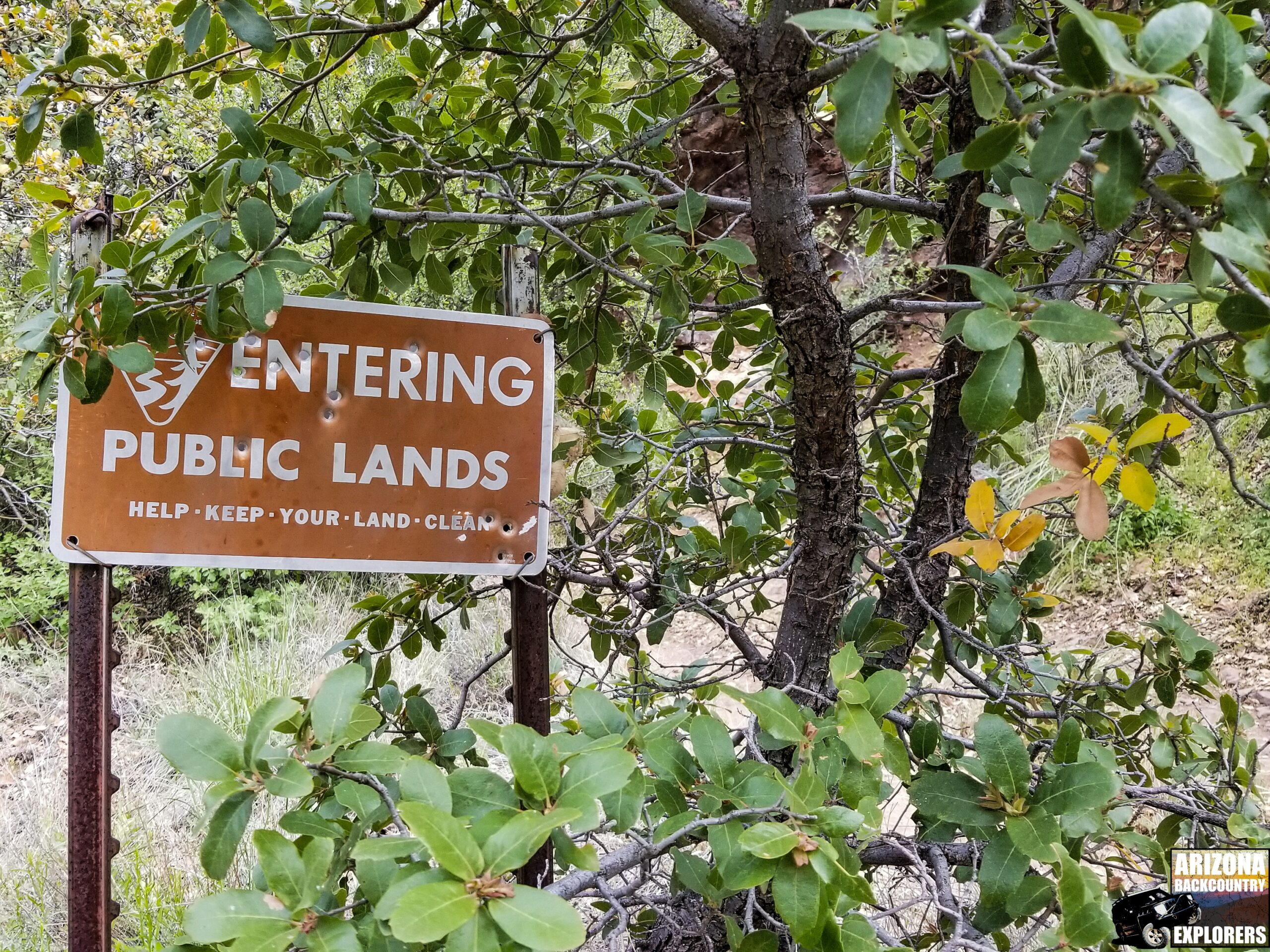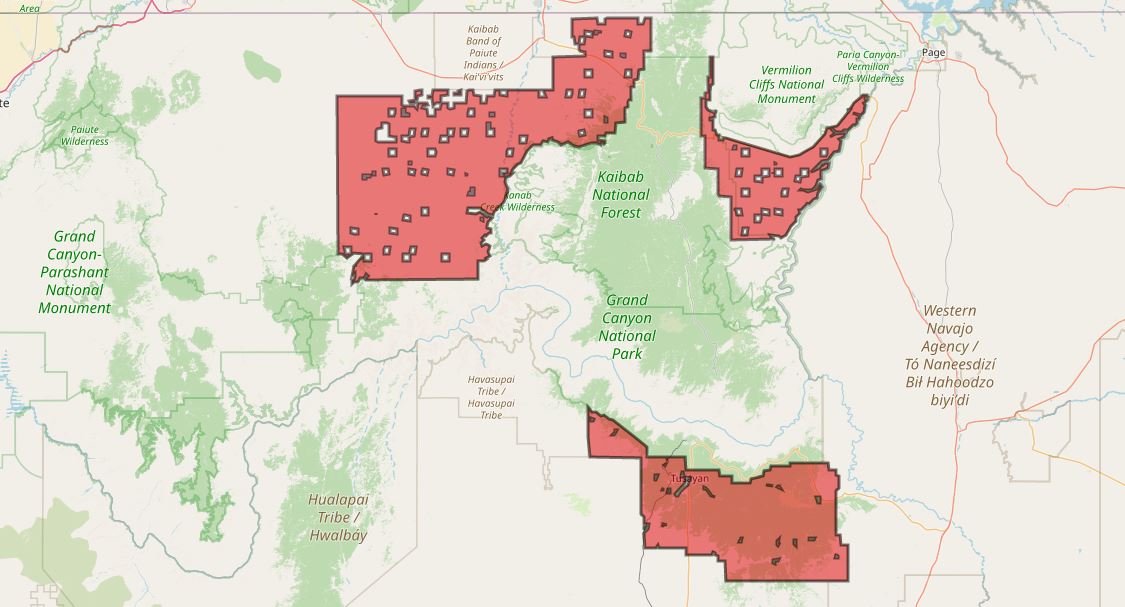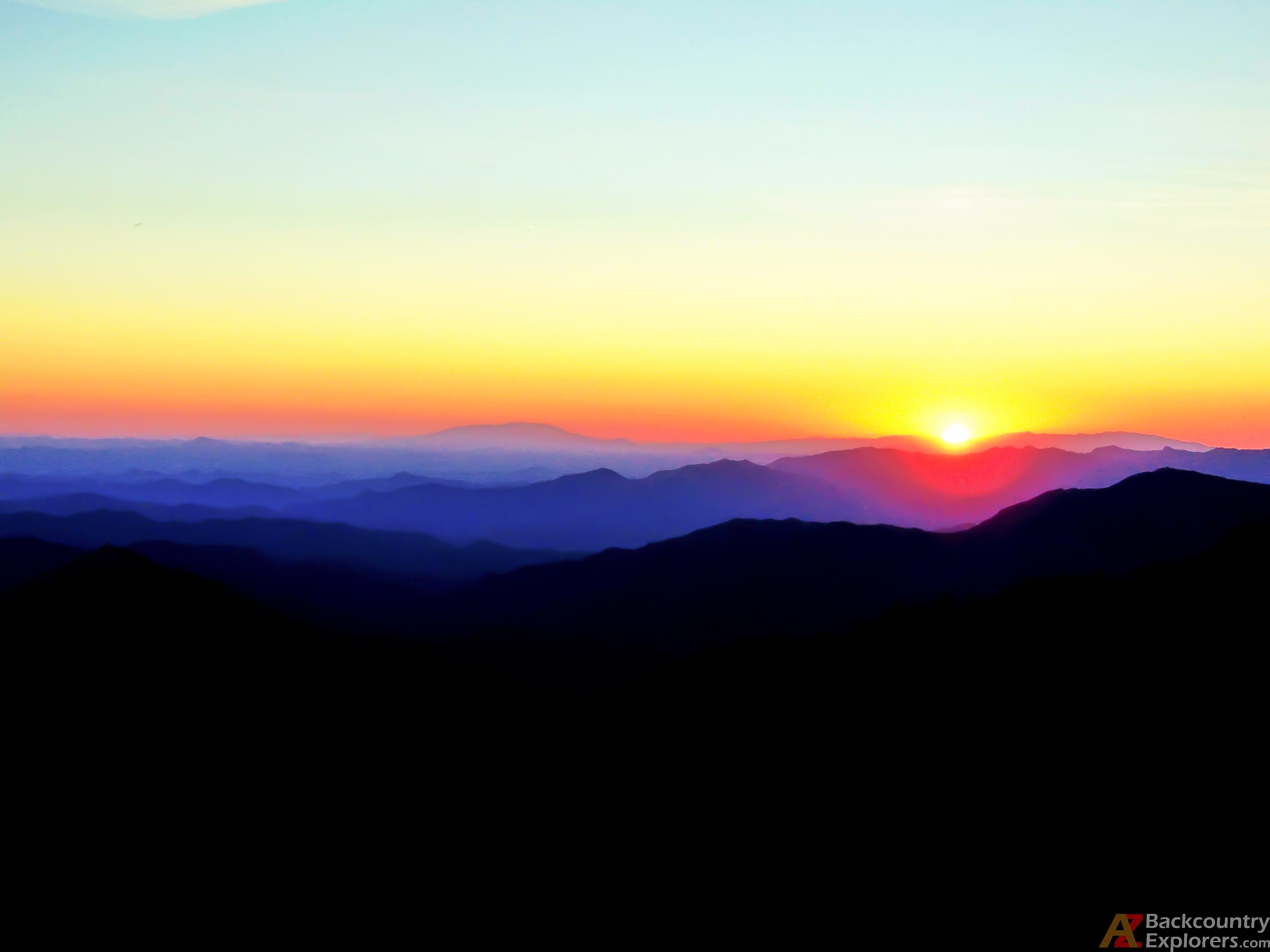Your cart is currently empty!
Posted in
On August 8th, 2023, Joe Biden used the Antiquities Act and signed a proclamation declaring the Baaj Nwaavjo I’tah Kukveni Ancestral Footprints of the Grand Canyon National Monument, which has placed over 1 million acres of state and federal public land in Arizona under rigorous protection. The proposed monument was introduced by the Grand Canyon Tribal Coalition, who are demanding Biden permanently protect the Grand Canyon watershed from uranium mining – a goal that has been ongoing since 2006.
The monument consists of three areas that encompass 1,037,259 acres of land north and south of the Grand Canyon National Park. Each area contains state trust lands, private lands, and federal lands managed by the Bureau of Land Management or the U.S. Forest Service.
- The Kaibab Plateau is a 575,632-acre area north of the Grand Canyon, west of the Kaibab National Forest, and the Kanab Creek Wilderness. The area contains several popular attractions, including Bull Rush Point, Sunshine Point, Hack Canyon, Gunsight Point, and others.
- House Rock Valley is a 134,513-acre area north of the Grand Canyon National Park that borders the Vermillion Cliffs to the north, Marble Canyon to the east, and the House Rock State Buffalo Ranch to the south.
- The Tusayan Ranger District is a 327,114-acre area north of the Grand Canyon National Park. It is bordered to the west by the Havasupai Reservation, to the east by the Navajo Nation, and consists of National Forest land.
The proclamation declares that the subsequent agencies shall prepare transportation plans that designate roads and trails closed to motorized and non-motorized mechanized use to protect various objects listed in the proclamation. These management decisions include road closures and restrictions that will prohibit the use of thousands of miles of existing roads that have been removed from the agencies’ inventory via the travel management process. It is also likely that the area will face additional motorized restrictions with the revision of existing travel plans.
“For purposes of protecting and restoring the objects identified above, the Secretaries shall prepare a transportation plan that designates the roads and trails on which motorized and non-motorized mechanized vehicle use, including mountain biking, will be allowed. The transportation plan shall include management decisions, including road closures and travel restrictions consistent with applicable law, necessary to protect the objects identified in this proclamation. Except for emergency purposes, authorized administrative purposes, wildlife management conducted by the Arizona Game and Fish Department, and the retrieval of legally harvested elk and bison, which are otherwise consistent with applicable law, motorized vehicle use in the monument may be permitted only on roads and trails documented as existing in BLM and Forest Service route inventories that exist as of the date of this proclamation. Any additional roads or trails designated for motorized vehicle use must be designated only for public safety needs or the protection of the objects identified above.”
1950s Grand Canyon Topo Map 24×36
This poster has a partly glossy, partly matte finish and it’ll add a touch of sophistication to any room. • 10 mil (0.25 mm) thick • Slightly glossy • Fingerprint resistant × ATTENTION We need your help to defend motorized access to public lands! Become a member today and gain access to our members-only content,…
Why you should oppose the creation of a national monument
The 4×4 community may have concerns about opposing a national monument for several reasons:
- Freedom of exploration: The creation of a national monument could potentially restrict the freeedom of exploration for individuals who enjoy outdoor activities that require driving on rugged terrain. This limits the ability to experience and engage with nature in a more expansive and adventurous way.
- Preservation of tradition: Many members of the 4×4 community have a deep appreciation for the history and traditions associated with exploring remote areas and wilderness. The establishment of a national monument might disrupt or diminish these traditions, leading to a loss of cultural heritage that has been passed down through generations.
- Economic impact: The 4×4 community often contributes significantly to local economies through visiting and supporting nearby businesses. However, the designation of a national monument could potentially reduce visitation rates from this community, resulting in adverse economic consequences for local businesses that rely on this form of tourism.
- Limited access for all: Opponents of national monuments argue that these designations often lead to restricted access for various activities, including 4×4 enthusiasts. This limitation could prevent individuals of diverse abilities, interests, and preferences from enjoying and appreciating the natural beauty of the area in their preferred way.
- Maintenance and infrastructure: Some individuals argue that national monument designations may divert resources away from the necessary maintenance and infrastructure improvements needed to support recreational activities like 4×4 driving. This could result in deteriorating conditions of roads and trails, making them less accessible and safe for enthusiasts.
It’s important to recognize that these concerns may vary depending on the unique circumstances of each national monument proposal. The specific impacts on the 4×4 community can differ depending on factors such as location, management plans, and the extent of restrictions imposed within the designated area.
You may also like…

Visit the AZBackroads.com Store

Please Become A Member
We need your help to keep our backroads open. Please join today!







